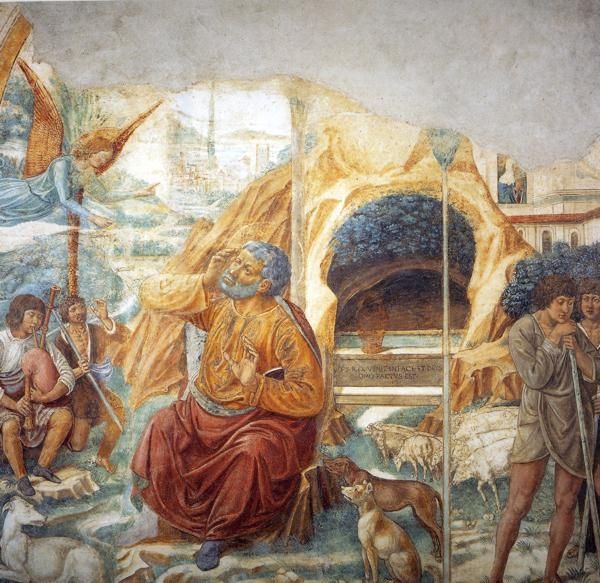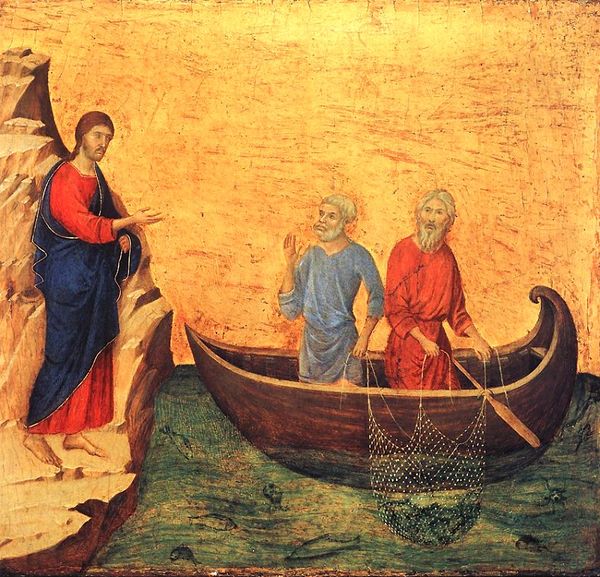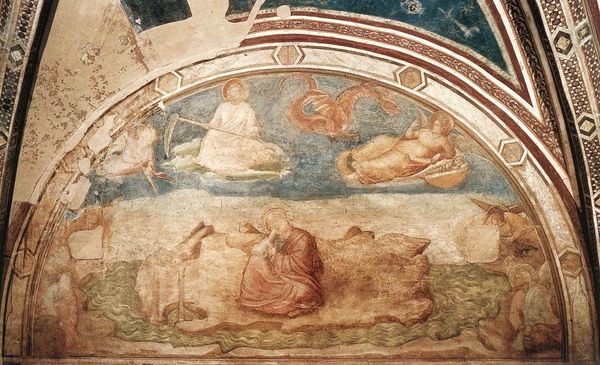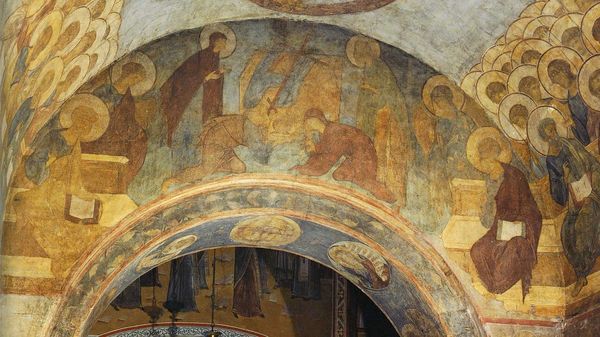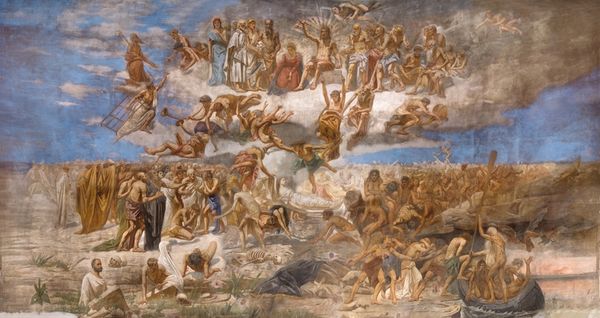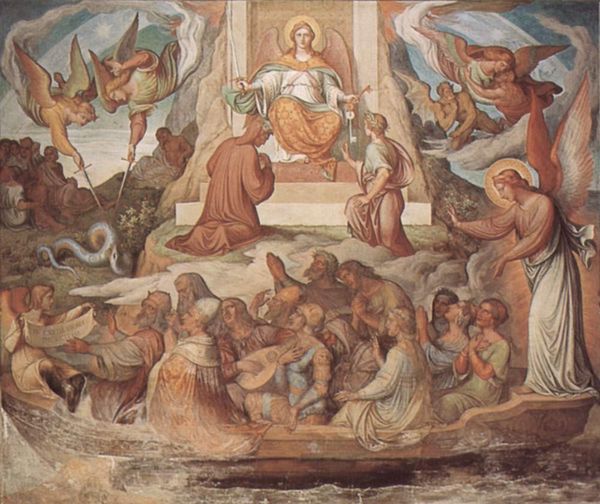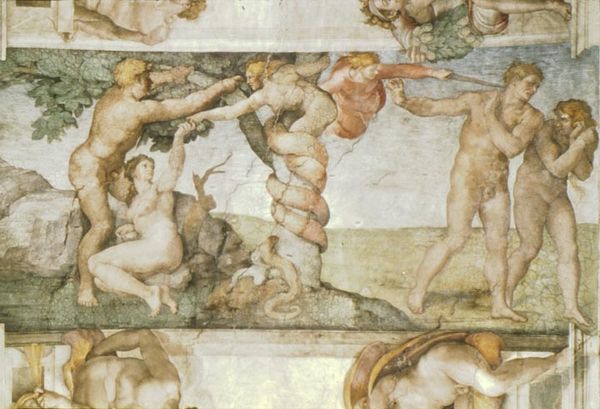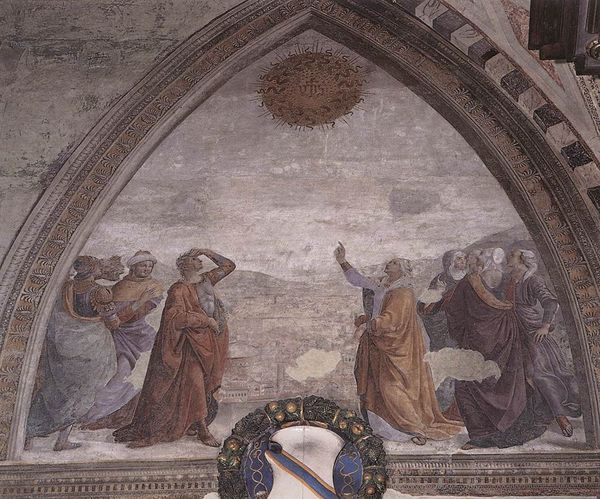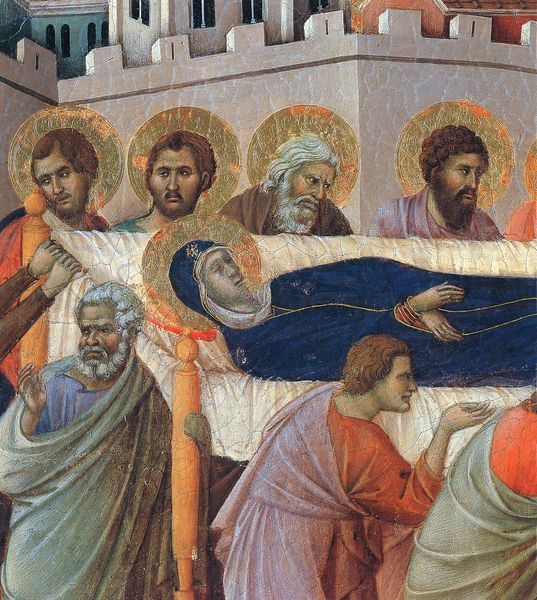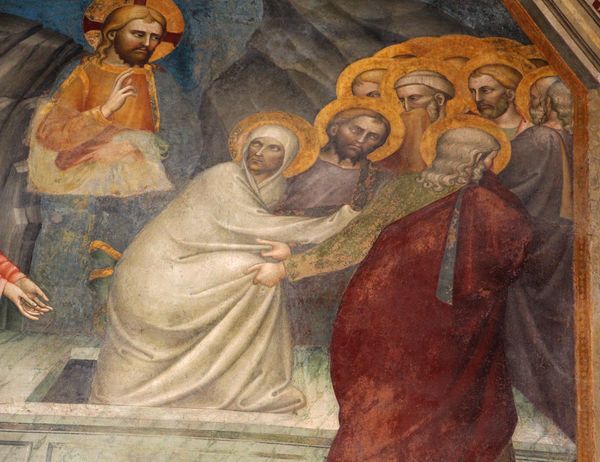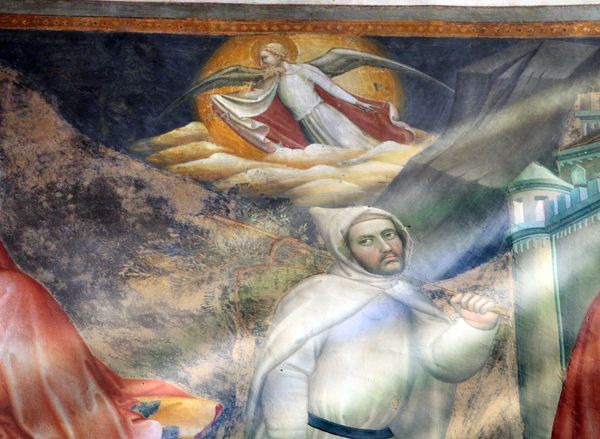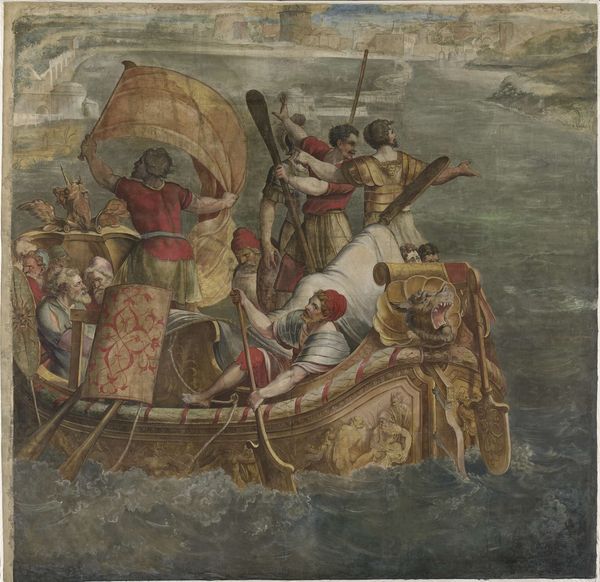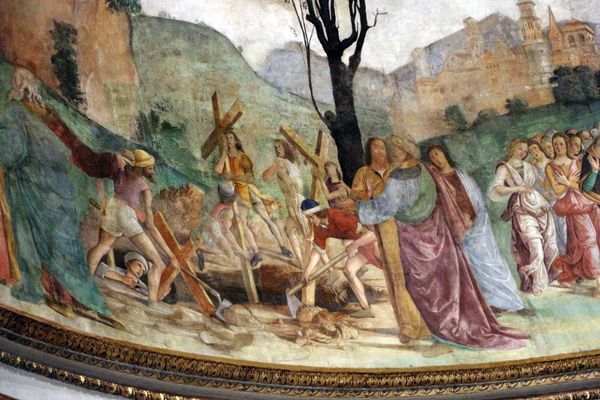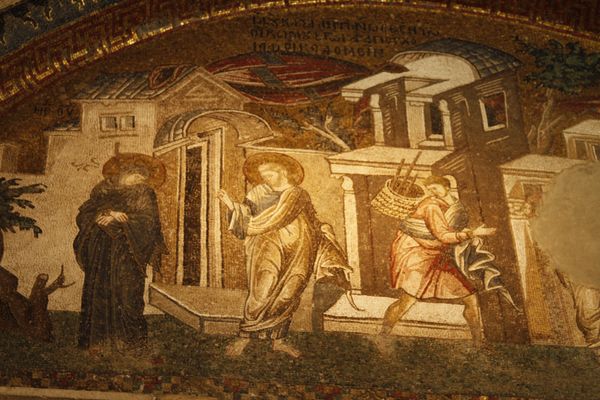
tempera, fresco
#
portrait
#
byzantine-art
#
narrative-art
#
tempera
#
figuration
#
fresco
#
oil painting
#
jesus-christ
#
christianity
#
history-painting
#
italian-renaissance
#
mixed media
Dimensions: 740 x 990 cm
Copyright: Public domain
Curator: Immediately striking, wouldn’t you agree? The distressed materiality imbues a feeling of immediacy to this almost seven-hundred-year-old fresco fragment, "Nacelle", circa 1313, by Giotto. Editor: I’m captivated by the muted palette, and the ochre tones establish a kind of serene yet solemn mood. The proportional relationships—look at the relatively immense scale of Jesus in relation to Peter—they command visual attention, creating this focal hierarchy that the eye simply cannot ignore. Curator: That immense figure signals not only divine power, but I find the medium also supports such messages. This technique – where pigment is applied to wet plaster - it creates this unique bond, ensuring not only that the artwork endures, but also suggests the themes within will also persist across time. And note how these frescoes are typically applied in registers, or layered compositions – a format rooted in traditional mural-making, each of the painting's divisions reflecting particular passages from a holy book. Editor: Absolutely, and the composition certainly echoes that hierarchical structure, wouldn't you agree? Peter is almost drowning, his arms outstretched as if reaching for salvation. This simple technique really works, doesn't it? Curator: Consider the craftsmanship involved. Preparing the wall, mixing the plaster, grinding and combining pigments, and then applying the fresco swiftly, with the understanding that revisions are limited once the plaster dries. This act of devotion through craft adds layers of meaning, doesn't it? Editor: Yes, layers both in terms of its execution and effect. What Giotto presents isn't mere illustration; he organizes forms and motifs—the gestures, the folds of drapery—to produce not just narrative coherence, but this profound contemplative state. It seems like a meditation on faith, in essence. Curator: Precisely. The fresco process embeds not just the image, but the labor into the very wall. When thinking of Giotto's practice, and particularly given his other commissions, that laborious, meticulous element is quite striking, given the grand scales he was working with. Editor: What is amazing, I find, is this interplay between the divine and material - that a fresco, intrinsically of this world given its materials and physical situation on the church wall, evokes such ethereal themes and aspirations. Curator: So true. "Nacelle" exemplifies Giotto's skill and theological complexity, all materially integrated into that foundational element of the church, in plaster and in time. Editor: It stands, truly, as both a narrative painting and philosophical prompt that the centuries can still appreciate.
Comments
No comments
Be the first to comment and join the conversation on the ultimate creative platform.
